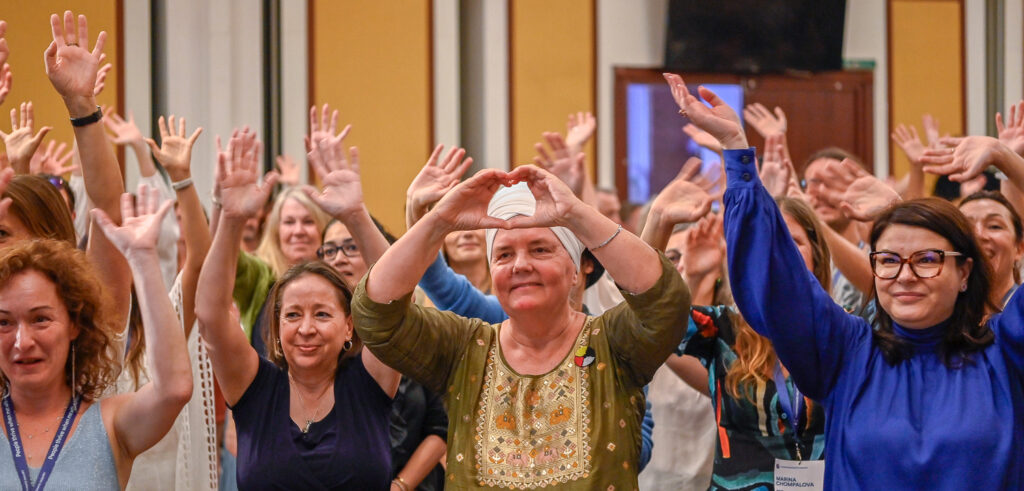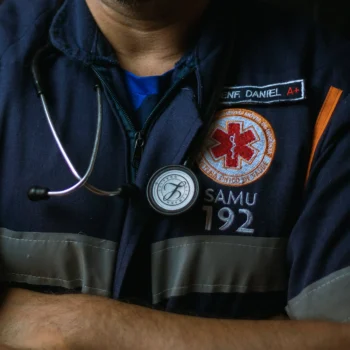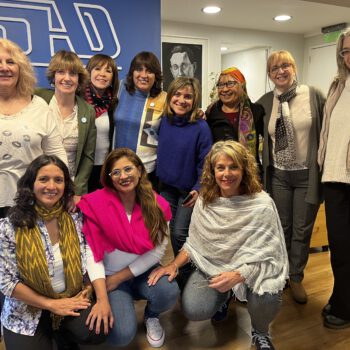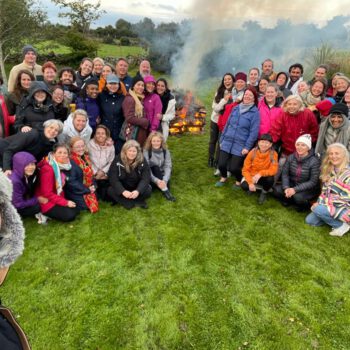Sat Dharam Kaur has been a practicing naturopathic doctor since 1989, with a focus on women’s health, cancer and mind-body approaches to healing. Since 2012, she has been studying, hosting, working and teaching with Dr. Gabor Maté. She structured his work in a format that could be taught to others, the Compassionate Inquiry® Professional Online Training.
This post is a short edited excerpt of Sat Dharam’s perspectives on healing addiction through awareness, acceptance and community. Listen to her full interview on The Gifts of Trauma Podcast.

What’s the connection between addiction, believing you had a happy childhood when you didn’t, and not being able to recognise that your childhood wasn’t happy?
We can answer this by looking at our own attachment style. As infants, we need to be with our mother and father, or at least one parent, who ideally, is loving, attuned, present, caring and nurturing. If they fulfill our needs as they arise, we feel secure, comforted and soothed.
A regulating adult presence calms our nervous system1 allowing a healthy, secure attachment to develop. With this attachment style, we know that we’re safe and our needs will always be met. In theory, this sense of wholeness makes us much less likely to develop an addiction. Being connected to ourselves, our bodies and our emotions strengthens our identity. If all of that is present, we sense that we’re important, that we matter, that we’re loved.
But if that sense is missing, perhaps because one of our parents was stressed, away working, distracted, or there’s an ongoing conflict between our parents, our needs can’t be met and secure attachment won’t develop. Our neurological circuits relating to pleasure and reward and calming and motivation may not develop fully either, because for that to happen, we need the regulation that comes from at least one parent providing consistent, loving, attuned care.
When something’s missing there’s a disconnection from our self, our body and emotions. When our needs aren’t met, we establish coping strategies to get them met, which work for a while but eventually further disconnect us from our emotions, our needs and our authentic voice.
As my needs weren’t met as an infant, one of my coping strategies was to be strong and meet my own needs. I didn’t believe another could do that for me, so I didn’t ask for help. This strategy probably developed after too many occasions when I asked for help and didn’t get it. So rather than continuing to ask, and risk being repeatedly disappointed and hurt, I met my own needs. This became a lifelong coping strategy founded in hurt, sadness, shame and pain. The little child in me still has those unmet needs. The pain is still there, so I need something to soothe it. An addiction could have developed here, as whatever addictive substance or behavior is chosen to soothe the pain is directly related to the unmet need.
For example, an unmet need to be calmed by a parent may lead to a marijuana addiction. A need for sweetness and comfort may lead to sugar or opiates. A need for encouragement may lead to some sort of stimulant. When we look at our addictive patterns, we get a sense of which of our needs weren’t met. As children, we can either meet those needs ourselves, become who the parent expects us to be, or become who the parent needs us to be. I had to become who my mother needed me to be because her emotional needs were bigger than mine. My emotional needs weren’t met, so an addiction could fill that emptiness, that hole.
A H Almaas calls that emptiness ‘the hole we don’t see.’ However we do see the behavior that’s trying to fill it. Examining what we’re addicted to can uncover the unmet needs that drive it. Gabor’s definition of addiction begins with any behavior, whether related to a substance or not, for which we have a craving. So from heroin to social media, gambling, pornography, drinking or eating… The addictive behavior initially gives us relief but ultimately harms us (and often those around us). Whatever we use to numb our pain truly is ‘a fix,’ so if I didn’t receive the love I needed from my parent(s) in the way I needed it as a child, my need for love is still there, still awaiting fulfillment.
One of my cravings can be for sweetness. I’m not addicted to it, but I can be when I’m stressed. One way I fulfill this need is with matcha green tea lattes. When I travel the world, I go to any airport’s Starbucks and get my magical sweet green tea latte. Recently, when a barista handed me my latte, I suddenly realized, this is like breast milk on demand! I just go to the counter, and it’s available. I wasn’t breastfed, and a very young part of me wants a sweet creamy, warm drink whenever they ask for it. I’m grateful to those Starbucks baristas for providing what I need when I need it.
Let’s take a look at who addiction impacts. There’s the addicted person and often, their family or community who are suffering too. To the family members who ask, “How can we help them?”
I suggest we begin with acceptance. As a child, I struggled to accept my mother. (How do you accept a mother who’s not taking care of you?) It was also hard to accept that she had this addiction, which I didn’t want her to have, because it was hurting her, me, our whole family. So acceptance was not possible for me as a child, but accepting the person, where they’re at, is the first step.
And while addiction isn’t a choice, we do want to offer choice, stability, empowerment and safety to someone who’s addicted to something in their environment. We could start by offering them a safe place one night a month, or one day a week, or inviting them to dinner.
We also know the power of co-regulation and the capacity of one person to bring another into an internal feeling of safety through their presence, kindness, care and openness. We could offer a safe, welcoming place where they can exist, just as they are, without blame or shame.
When there’s that little bit of stability, we can move to engaging in some play… shooting hoops or playing Frisbee, going to a concert, any fun activity that creates some connection.
The next piece could be sharing opportunities for healing, so they can make their own choices when they’re ready. And when they are ready, we can get them into a recovery program or whatever works for them.
When they emerge, rather than returning to their old environments and connections with people who are still addicted, we can surround them with caring people modeling healthy habits in new environments.
We can only shift people when they’re willing and interested in shifting. At that time we can provide environments that are life enhancing and supportive.
Finally, we can look at the gifts each individual possesses, see them for their possibility and help them manifest their gifts, whatever they may be.
The Gifts of Trauma is a weekly podcast that features personal stories of trauma, transformation, healing, and the gifts revealed on the path to authenticity. Listen to the interview, and if you like it, please subscribe, leave a rating or review, and share it with others in your community.




Comments are closed.